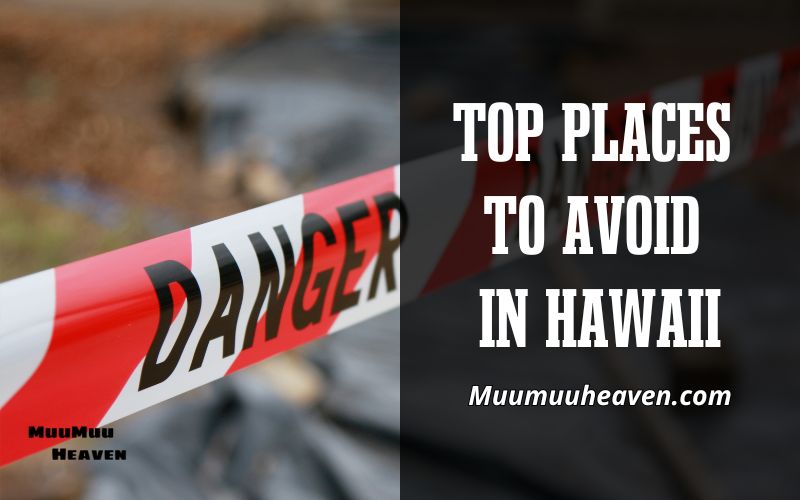When planning a trip to the picturesque islands, knowing the places to avoid in Hawaii is as crucial as the must-see spots.
This guide helps identify less desirable locations to ensure a safe and pleasant experience, directly addressing the concerns of travelers seeking reliable information.
Contents
- 1 Top Places to Avoid in Hawaii for Safety Reasons
- 2 Safety Tips for Tourists in Hawaii
- 3 Remote Areas in Hawaii to Approach with Caution
- 4 FAQs about Dangerous Places in Hawaii
- 4.1 Are there specific tourist scams to watch out for in Hawaii?
- 4.2 What areas in Hawaii are generally considered safe for tourists?
- 4.3 How can I ensure my safety while hiking in Hawaii?
- 4.4 What should I do if I encounter a dangerous situation in Hawaii?
- 4.5 Are there specific times or events when Hawaii is less safe?
- 5 Conclusion
Top Places to Avoid in Hawaii for Safety Reasons
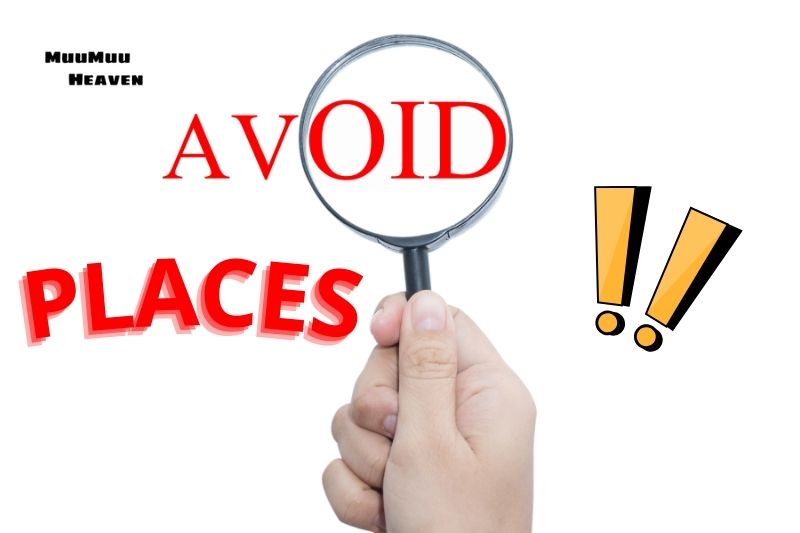
When planning a trip to Hawaii, safety should be at the forefront of your mind. This guide outlines the top places to avoid in Hawaii, focusing on high-risk locations with notable crime rates, frequent accidents, or other safety concerns.
By knowing which areas to steer clear of, you can ensure a more enjoyable and stress-free Hawaiian adventure.
Honolulu’s High Crime Areas
Honolulu, as Hawaii’s capital and largest city, has its share of high-crime neighborhoods. While it is generally a safe city, some areas experience higher crime rates due to increased population density and activity.
These include sections of Downtown Honolulu and parts of Chinatown. Visitors should exercise caution when exploring these regions, especially at night.
To enhance your safety, consider staying within well-known tourist areas like Waikiki, which has a stronger police presence.
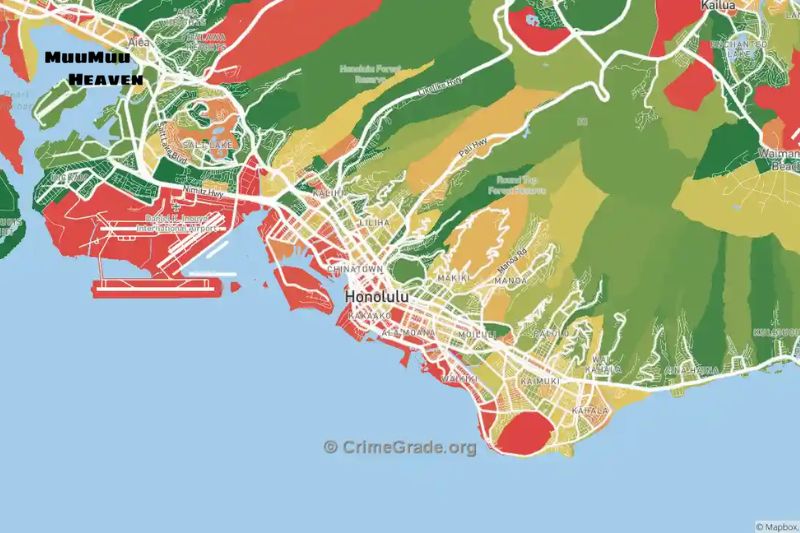
Remote Locations on Maui
Maui is renowned for its stunning landscapes and beautiful beaches. However, some remote areas on the island can pose safety risks. These risks arise from limited accessibility, lack of emergency services, and rugged terrain.
For example, hiking trails like the Pipiwai Trail can be challenging, with steep inclines and unpredictable weather.
If you plan to explore these areas, make sure you’re well-prepared, carry emergency supplies, and inform someone of your plans.
Kauai’s Secluded Beaches
Kauai, the Garden Isle, offers tranquil beauty, but some of its secluded beaches can be hazardous. The north shore, with spots like Hanakapi’ai Beach, has strong currents and unpredictable waves, leading to dangerous swimming conditions.
These areas are also more prone to flash floods during heavy rain. It’s best to avoid these beaches unless you’re with an experienced guide or lifeguard supervision.
Unsafe Spots in Big Island’s Volcanoes National Park
While the Volcanoes National Park is a must-visit for its awe-inspiring landscapes, some locations within the park require extra caution. The ongoing volcanic activity can lead to sudden changes in the environment, creating risks for visitors.
Sections like Halemaʻumaʻu Crater can release toxic gases, and the lava flows can be unstable. Always follow park guidelines, stick to marked trails, and heed warnings from park rangers.
Areas with High Traffic Accidents
Hawaii’s roads can be narrow and winding, especially on the islands’ outer regions. Maui’s Hana Highway is beautiful but known for its tight curves and single-lane bridges.
High-traffic areas in Honolulu, such as H1 Freeway, are prone to accidents during rush hour. To stay safe, drive cautiously, follow speed limits, and avoid distractions while on the road.
By staying aware of these high-risk areas, you can focus on enjoying Hawaii’s beauty while avoiding potential dangers. Prioritize your safety, plan your itinerary wisely, and respect local customs for a memorable and secure trip.
Safety Tips for Tourists in Hawaii
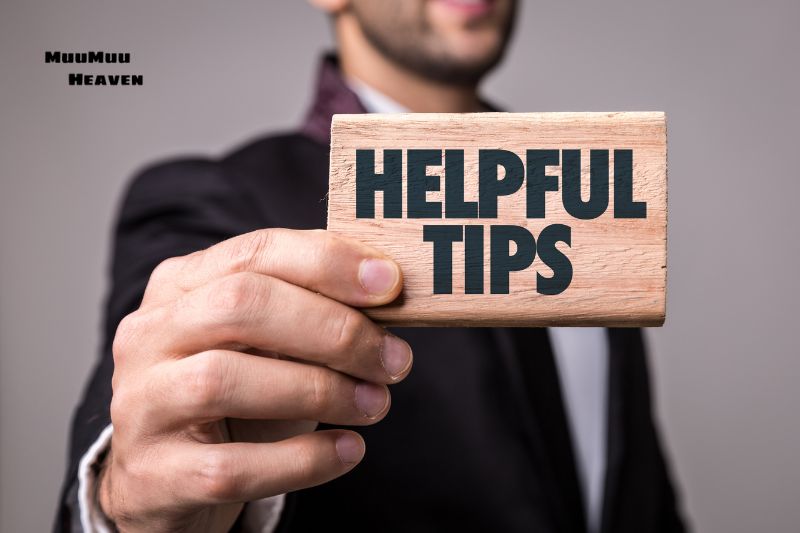
While Hawaii is known for its breathtaking landscapes and vibrant culture, it’s crucial to stay safe during your visit. From avoiding common tourist traps to steering clear of risky behaviors, here are practical safety tips for tourists in Hawaii.
These tips can help you enjoy a worry-free trip while navigating the various attractions and high-traffic areas.
Be Aware of Tourist Traps
Popular destinations like Waikiki and Maui attract a lot of tourists, making them prime locations for scams and tourist traps.
Beware of people offering too-good-to-be-true deals or services that seem unofficial. If someone approaches you with a suspicious offer, it’s best to decline and walk away. Always research vendors and tour operators before committing to any activity.
Practice Safety in Public Areas
Public spaces in Hawaii can be crowded, especially during peak tourist seasons. When visiting places like Honolulu or Pearl Harbor, keep your belongings secure and close to you at all times.
It’s easy for pickpockets to take advantage of distracted tourists. Consider using a money belt or a crossbody bag for added security.
Stay on Marked Trails and Beaches
Hawaii is home to some of the most beautiful trails and beaches, but it’s essential to stay within designated areas. Many accidents occur when tourists venture off-trail or into restricted zones.
For instance, in Volcanoes National Park, the lava flows can be unstable and hazardous. Always follow park guidelines and stick to the paths laid out by the authorities.
Avoid Swimming in Dangerous Waters
While Hawaii is famous for its beaches, not all are safe for swimming. Some beaches on the Big Island and Kauai have strong currents and rip tides.
Check local weather reports and heed warning signs before entering the water. If you’re unsure about a beach’s safety, ask a local or lifeguard for advice.
Respect Local Customs and Culture
Hawaii has a rich culture and a strong sense of community. Respecting local customs not only ensures a positive experience but also keeps you safe.
Avoid disruptive behavior, and learn a few Hawaiian phrases to show respect. Additionally, some areas hold cultural significance, like Pearl Harbor, where visitors should maintain a respectful demeanor.
Know Emergency Contacts
In case of emergencies, it’s important to have a list of contact numbers handy. The Honolulu Police Department can be reached for crime-related issues, while the Hawaii Tourism Authority can provide general safety information.
It’s also a good idea to have the contact information of your hotel or accommodation.
Remote Areas in Hawaii to Approach with Caution
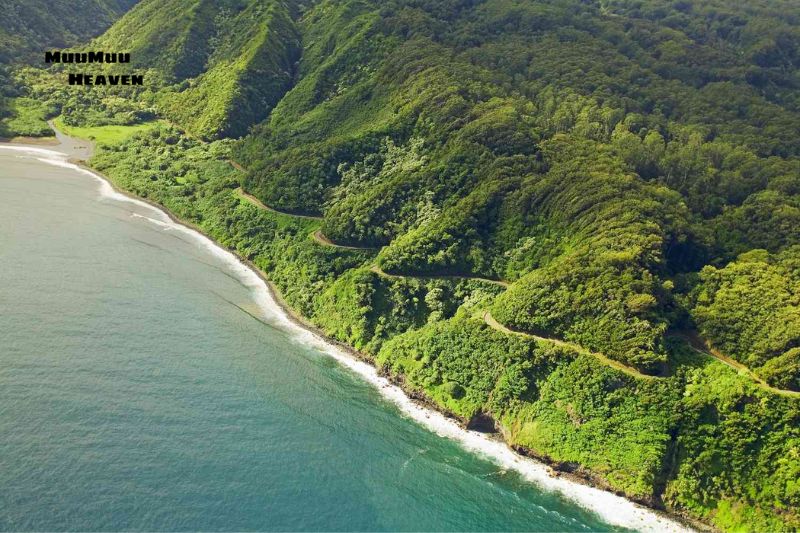
Hawaii’s beauty lies in its diverse landscapes, from lush rainforests to dramatic cliffs and remote beaches. However, some of these isolated or less-developed areas pose safety risks due to limited accessibility or emergency response times.
It’s important to know which remote areas to approach with caution to ensure a safe and enjoyable visit to Hawaii.
Hana Highway on Maui
The Hana Highway is famous for its scenic drive, but it’s also notorious for its narrow roads and sharp curves. The highway stretches along Maui’s eastern coast, with single-lane bridges and steep drop-offs.
While the drive offers breathtaking views, it can be challenging and even dangerous for inexperienced drivers.
To stay safe, drive slowly, follow road signs, and avoid distractions. It’s also wise to travel during daylight hours and allow extra time for the journey.
Na Pali Coast on Kauai
The Na Pali Coast is one of the most stunning and remote areas in Hawaii, featuring towering cliffs and secluded beaches. However, its rugged terrain can be treacherous.
Hiking the Kalalau Trail, which winds through the Na Pali Coast, requires experience and proper preparation. There are steep ascents, narrow pathways, and unpredictable weather conditions.
If you choose to hike this trail, ensure you have proper gear, plenty of water, and emergency supplies. Consider hiring a guide if you’re unfamiliar with the area.
Big Island’s Lava Fields
While exploring the Big Island, you’ll find vast lava fields that are intriguing but potentially dangerous. The terrain can be unstable, with sharp rocks and hidden crevices.
Additionally, volcanic gases and heat pockets can pose health risks. Always follow the guidelines provided by Volcanoes National Park and avoid venturing into restricted areas. If you’re hiking through lava fields, wear sturdy footwear and bring extra water.
Remote Beaches and Coves
Hawaii’s remote beaches and coves are perfect for those seeking solitude, but they can be risky due to limited accessibility and lack of lifeguards. Some popular secluded spots, like Polihale Beach on Kauai, are known for strong currents and sudden weather changes.
It’s crucial to check local conditions before visiting these areas and to avoid swimming in rough waters. If you’re exploring remote beaches, go with a group and have a plan in case of emergencies.
FAQs about Dangerous Places in Hawaii

Are there specific tourist scams to watch out for in Hawaii?
Yes, common scams include fake tour operators, overcharging at rental car stations, and fraudulent ticket sales. Always verify the credibility of businesses.
What areas in Hawaii are generally considered safe for tourists?
Waikiki and Maui are generally safe, but it’s always best to stay in well-known areas and be cautious at night.
How can I ensure my safety while hiking in Hawaii?
Stick to marked trails, inform someone of your route, carry sufficient water and a first aid kit, and be aware of weather changes.
What should I do if I encounter a dangerous situation in Hawaii?
Contact local authorities immediately, such as the Honolulu Police Department. It’s also wise to have emergency numbers handy.
Are there specific times or events when Hawaii is less safe?
Generally, major events or festivals can lead to higher crime rates due to increased crowds. Stay aware of your surroundings during these times.
Conclusion
In wrapping up our guide on less recommended areas in Hawaii, we encourage travelers to explore safer alternatives for a memorable journey.
Visit Muumuuheaven.com for more insights on secure and delightful travel experiences in Hawaii, ensuring your trip remains a paradise.

